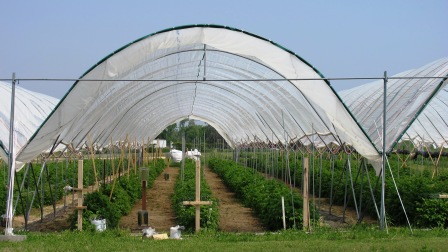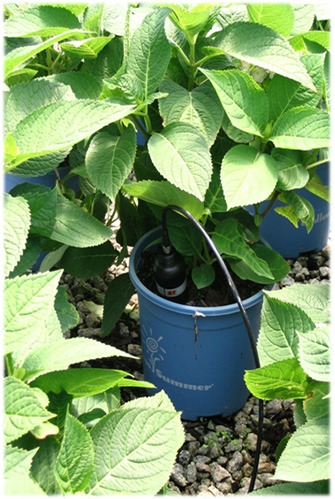Just flew in from Miami and boy are my arms tired – rim shot. Seriously, I just returned for the annual meeting of the American Society for Horticultural Science (ASHS) in Miami. Always good to wander the halls and renew old acquaintances and take in the latest in Hort science. Judging by the posters and talks here are some of the hot topics at this year’s ASHS meeting.
LED’s
Horticultural applications of Light Emitting Diodes (LED) are receiving a lot of attention these days. There are a couple of reasons for this. One, costs of LEDs are decreasing as manufacturing becomes more efficient. Two, LED’s can be built to generate specific wavelengths of lights. As many folks learned in biology, plants only use specific wavelengths during photosynthesis. Therefore LED’s can be used to only produce the light energy that plants need for photosynthesis – this can greatly increase energy efficiency. Aslo, incandescent light bulbs are being phased out of production. Old fashioned bulbs are not very efficient (they yield about 10% of energy used as light) but the light they do produce is effective for things like phot- period lighting (i.e., daylight extension for greenhouse crops). Since LED’s can be designed to reproduce the same wavelengths using much less energy, they may ultimately be a good substitute for incandescent bulbs.

High tunnels
Lots of interest these days in ‘high tunnels’ for fruit and vegetable production. These are not full-blown greenhouses but simply tall hoop-house structures big enough to grow fruit trees inside. One of the main benefits is season extension; allowing fruit or vegetable harvests earlier or later in the season than would be possible otherwise. This is especially important when we consider the local food movement for colder climates. There are also other, less obvious, benefits such as eliminating cracking of cherries due to rainfall.

Sensor-based irrigation systems
A hot topic, especially for the nursery crowd. There have been rapid advances in the reliability of capacitance probes and while costs are decreasing. In addition, there have been advances in wireless control systems. There are still challenges for nursery growers that have to deal with a diverse array of crop types and container sizes but researchers are definitely on the path of developing sensor-based systems that will automatically turn irrigation on and off in response to real-time soil moisture measurements. This will help to optimize plant growth while minimizing potential leaching of nutrients and chemicals.
